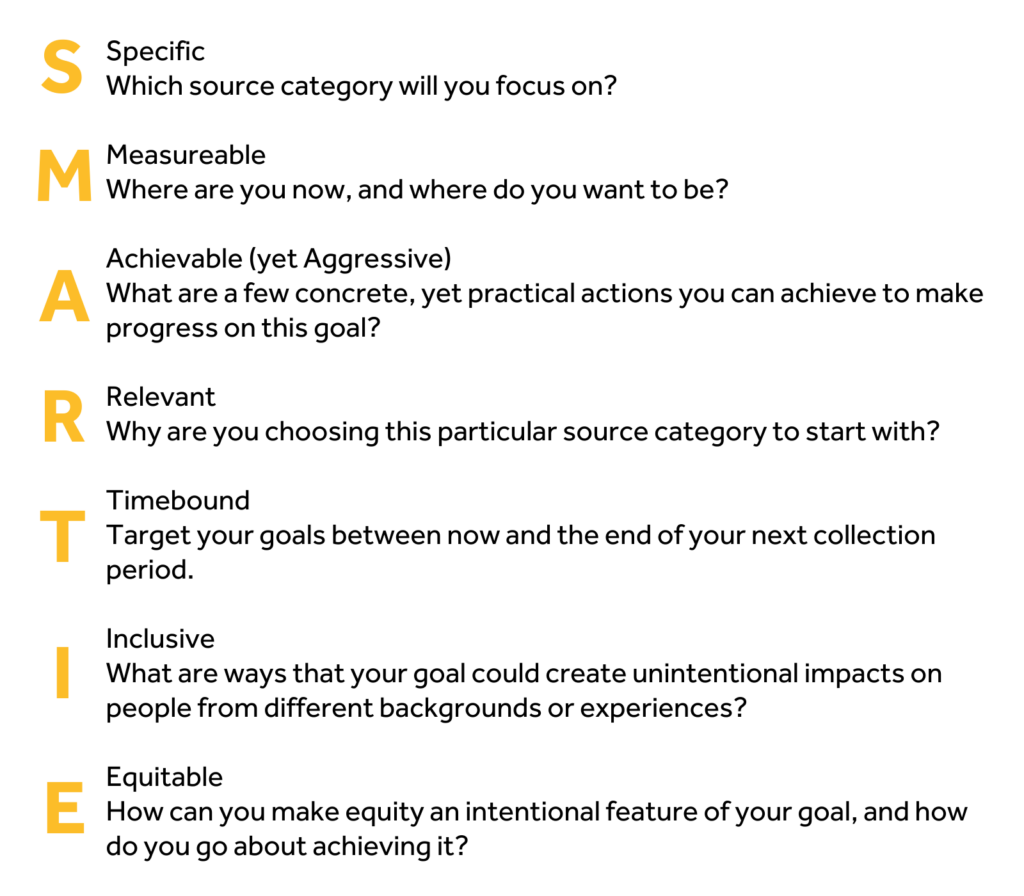Welcome to API’s source tracking series. I’m your host, Katie Kutsko, API’s education and strategy manager of news products. I’ll amplify insights and share resources I’ve learned alongside newsrooms who track the diversity of people quoted in their stories through Source Matters, API’s award-winning source diversity tracking and analysis tool.
How to set impactful goals
My daughter turns one soon. Over the past 11 months, I’ve spent quite a bit of time envisioning a future for her. I have always imagined a future where local and community-based news thrives, but now, as a mother, I see just how critical it is for this vision to become reality. Americans need the press to provide accurate and community-oriented news and information to help families and individuals make decisions that allow them to succeed.
I have always imagined a future where local and community-based news thrives, but now, as a mother, I see just how critical it is for this vision to become reality. Americans need the press to provide accurate and community-oriented news and information to help families and individuals make decisions that allow them to succeed.
While experiencing this big personal life transformation, I have had the privilege of working with a cohort of newsrooms who are committed to expanding their reach into communities that have been historically underserved or undercovered through tracking sources.
If you want to start tracking sources but don’t quite know where to begin, here’s a guide to help you get started.
Some of the news organizations in the Source Matters cohort have already been doing the work of strengthening coverage of local communities and amplifying underrepresented voices. Their source-tracking efforts build on the broader DEIB initiatives at their organizations. For example, our partners at the Record-Journal in Connecticut wanted to join the cohort after they created a Latino Communities Reporting Lab to improve local coverage. They have also created a dedicated health equity beat with a focus on disparate healthcare access and outcomes among underserved residents.
Similarly, our partners at VTDigger recently conducted a community listening project and heard from residents that Vermont media should “do a better job including the perspectives and experiences of diverse communities, including BIPOC Vermonters, multilingual, rural and low-income people, and people with disabilities.” Undergoing a source audit will enable them to be more inclusive and equitable in their reporting by broadening and diversifying the people and places they turn to for information.
Whether you develop your own homegrown data collection system through a Google Form/spreadsheet hack or use a tech tool like Source Matters, source tracking is one way to tackle the complex problem of understanding how your coverage reflects and represents your community and audience.
WHAT OTHERS ARE DOING
Setting an initial goal can give everyone on the team a direction to focus their efforts and help you get buy-in early so people know it’s worth the work. But keep in mind that the goals you set can change as you learn along the way.
- Our partners at San Antonio Report first set a goal to be more representative of City Council districts in its coverage. But over time, the newsroom shifted its priority to better reflect the demographics of San Antonio and Bexar County and set one specific newsroom goal to increase Latinx representation in their stories.
- Our partners at VTDigger want to better reflect the demographics of their home state of Vermont. After an initial two-week period of collecting source data at the beginning of April, the team noticed two gaps in their sourcing: They had a disproportionate percentage of higher-income sources, and people with disabilities were underrepresented. Their goals, which also reflect feedback they heard through the community listening project, are to close the gap between the percentage of sources represented in their coverage and the actual number of Vermonters with a household income of less than $35,000 and the population reported to have disabilities or chronic illnesses.
- Our partners at Alaska Public Media set a goal to increase Latinx sources and decrease white sources, based on initial source tracking data. To get there, they plan to prioritize talking about source diversity in reporter-editor conversations, brainstorm thematic approaches to story ideas, start a source database and commit reporting staff to having two to five coffees every month with nonwhite sources (with the time and freedom to build relationships — with no expectation of a story being filed!)
Goal-setting can start valuable internal conversations and get your teammates to take those first steps toward big aspirations for your entire organization. There’s a lot of unlearning we need to do across the industry if we want folks in our communities to trust our journalism. Regularly assessing newsgathering practices through source tracking is one way to chip away at these longstanding problems.
TRY IT OUT NOW
To help our cohort come up with these goals for their sourcing strategies, we adopted a popular framework called SMARTIE goals. SMARTIE is an acronym that stands for Specific, Measurable, Achievable, Relevant, Timebound, Inclusive and Equitable.
The intention of this framework is to focus on outcomes with impact. Don’t set goals to do necessary activities (like meetings, reports or training) or outputs (like offerings for your audience or capabilities for the organization), but set goals based on impactful outcomes (like the end purpose or objectives of all the activities — audience growth and development, revenue gain, mission achievement, etc.) This framework is great for setting a newsroom-wide or team-wide goal, as well as a personal goal for sourcing in a beat you cover.
Here’s the process our cohort newsrooms followed, which you should steal and adapt:

Download the full worksheet here.
DIG DEEPER
- Source Matters is accepting new partners. Register for a demo on Thursday, Sept. 14 at noon EDT, or contact us to learn more about source diversity tracking.
- Follow this checklist for launching a source tracking initiative in your newsroom, which is based on my guide to auditing sources.
Share with your network
You also might be interested in:
As director of inclusion and audience growth, Harris-Taylor will continue API’s efforts to drive organizational and cultural transformation while sharpening its commitment to diversity, equity, inclusion and belonging. She’ll also work to deepen API’s partnerships with community organizations and non-news experts.
Welcome to July’s Special Edition, where we feature essays from four attendees of the API Local News Summit on Local Identity, History and Sustainability on [...]
We assembled a working group of news leaders determined to find solutions to help their peers navigate the process of building capacity and strengthening cultures of learning.


